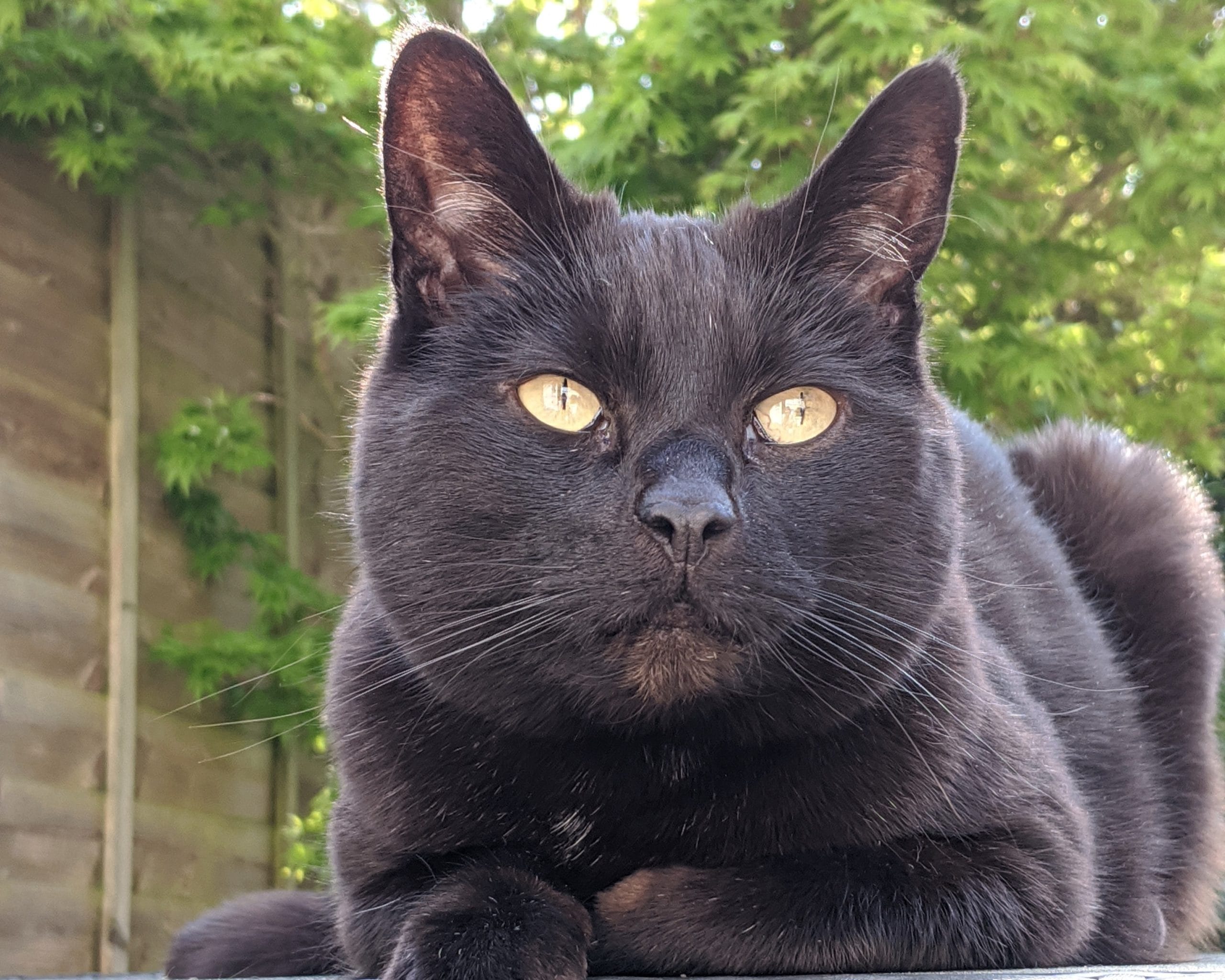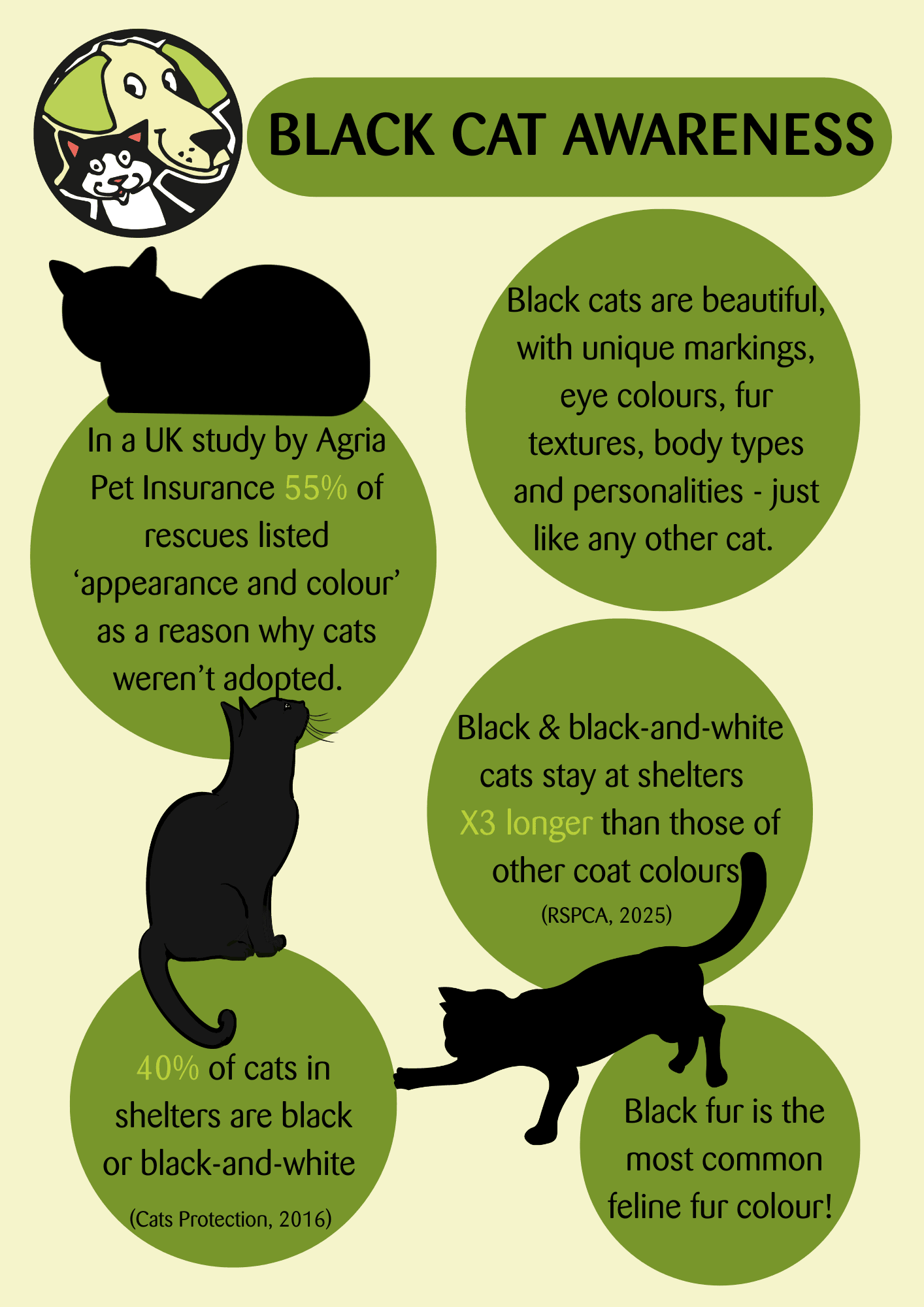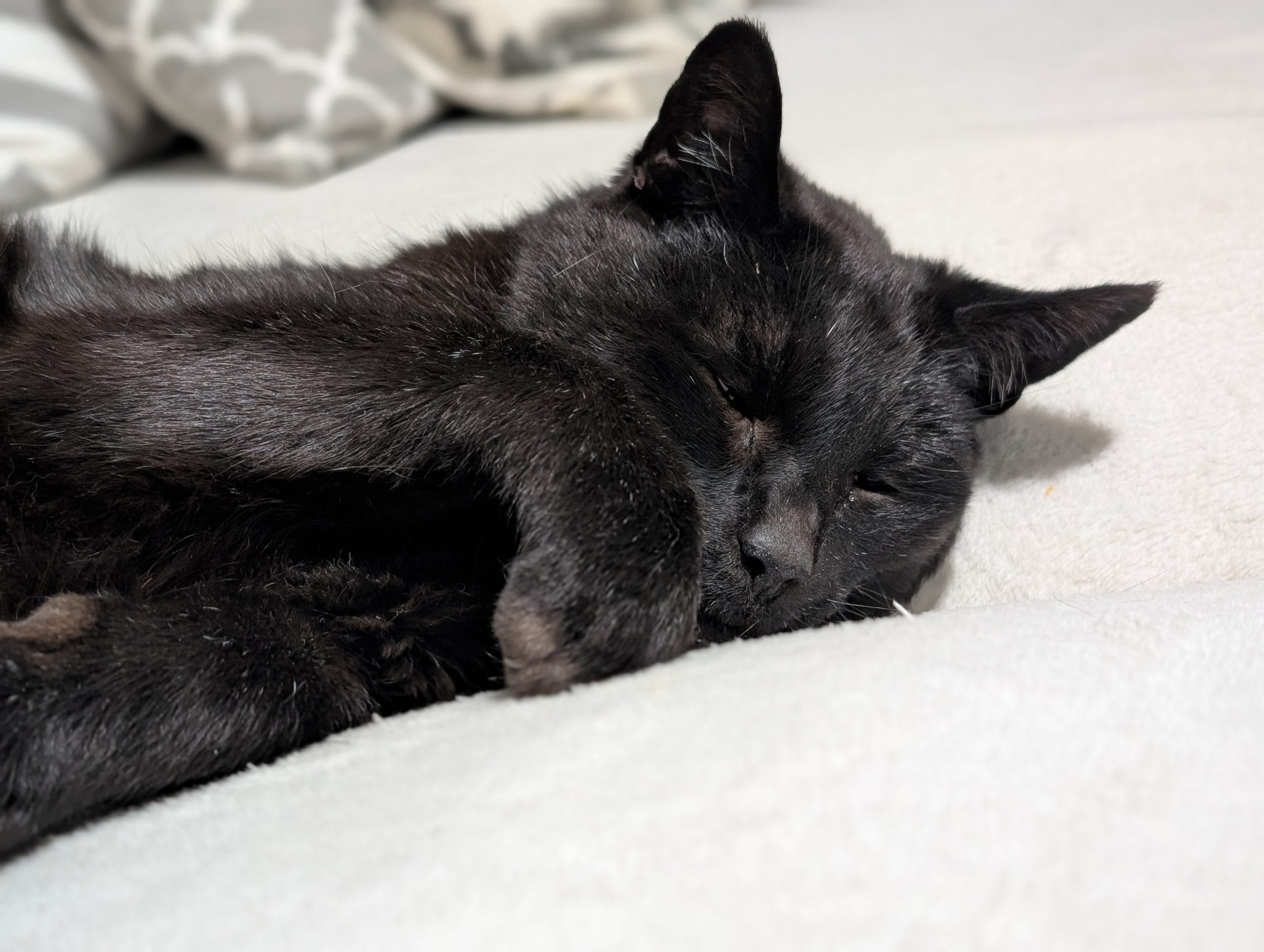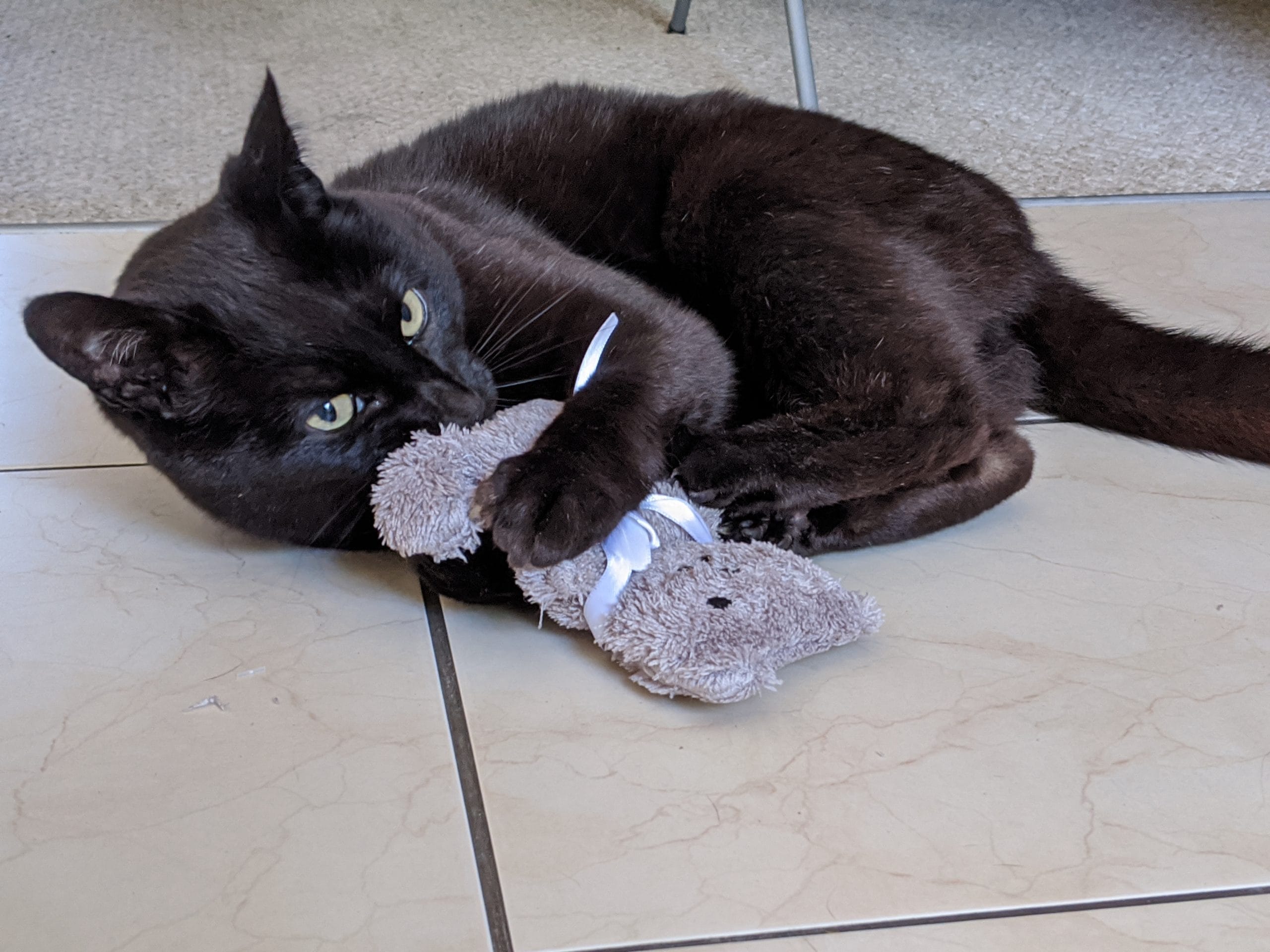Despite being based on myth, superstitions about black cats persist in parts of Europe and the United States.
As a result, it is reported that black and black-and-white cats tend to stay longer at shelters before being adopted – simply because of the colour of their fur.
So, what is the truth behind these myths? And how do these old beliefs continue to impact black cats in shelter’s today? Let’s take a look at the history beyond the stigma.
Black cats and witches
Black cats have long been associated with witches, often believed to be witches in disguise or their magical familiars. This dates to Medieval Europe during the Middle Ages, when fear and superstition ran high and witch hunts were widespread.
During this time, myths emerged suggesting that black cats served witches by spying, casting spells, or aiding in magical practices. These stories fuelled a superstition that still lingers today—the idea that a black cat crossing your path brings bad luck.
From the 13th to 17th centuries, particularly during events like the Salem Witch Trials, these fears sadly led to the mistreatment of both people and animals, including many black cats.
Despite Medieval folklore creating the unfounded belief that black cats are bad luck; black cats have become symbols of Halloween with many people celebrating black cats for their beauty and charm.
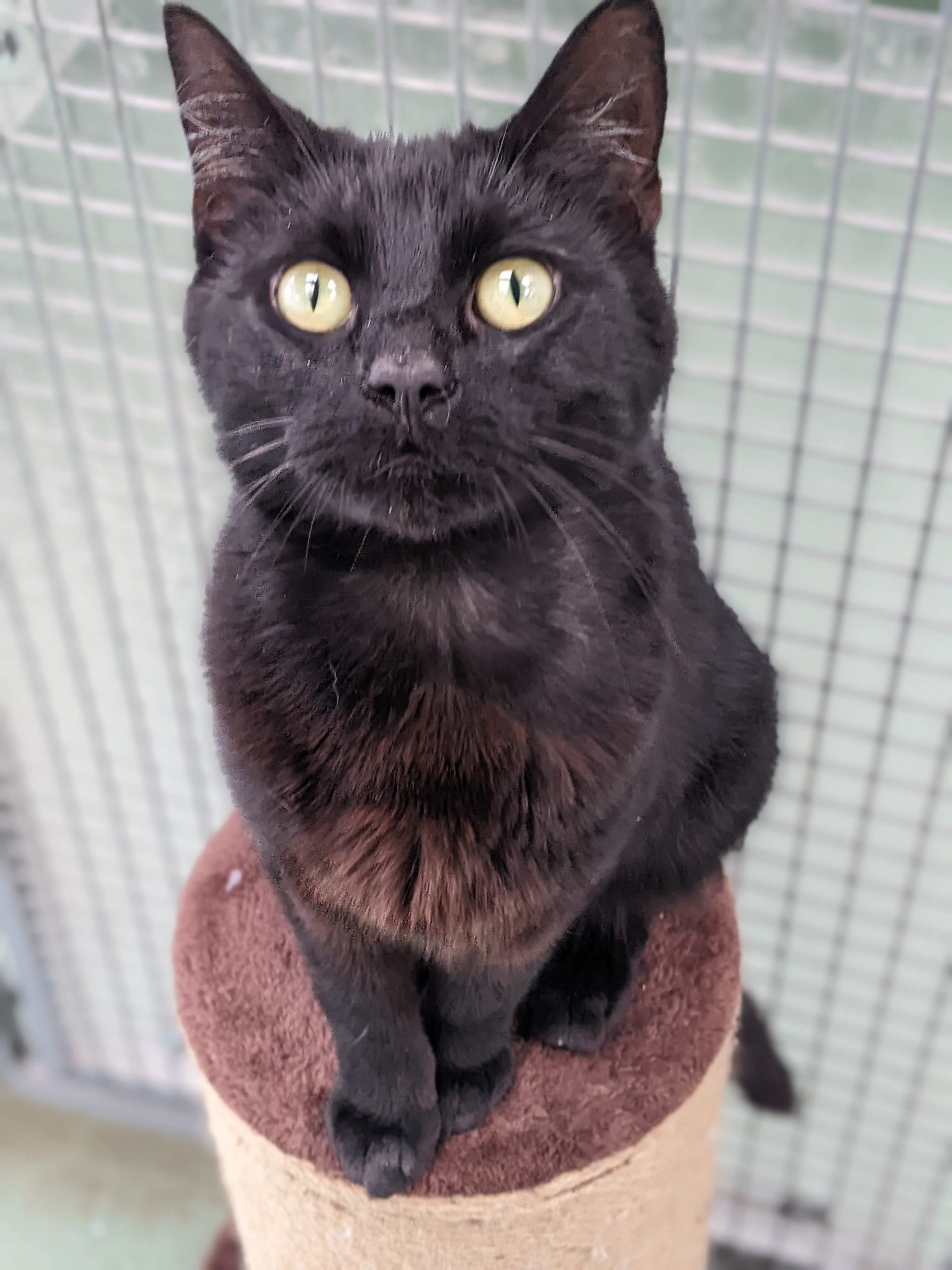
Symbols of bad luck
During the 16th Century, animals with dark features – including black cats – were believed to be omens of misfortune.
These beliefs fed into superstitions that surprisingly persist to this day including:
- A black cat crossing your path brings bad luck
- Seeing a black cat during a funeral procession signals another death in the family
- In parts of Europe, including Italy, a black cat laying on a sick person’s bed meant death was near.
- A black cat walking away from you means bad luck is approaching
Of course, these are all myths and superstitions, based on out-of-date beliefs from the Medieval ages.
Symbols of good luck
Not all cultures view black cats negatively – in fact, many see them as symbols of luck and protection.
- In Ancient Egypt, black cats were associated with Bastet, the cat-headed goddess of home, fertility, and protection.
- In Japan, spotting a black cat, is thought to indicate you will find love.
- In England, receiving a black cat as a wedding gift is considered good luck.
- In Scotland, a stray black cat appearing on your doorstep signals success and happiness.
- In France, treating a black cat kindly is believed to bring good fortune.
- Historically, sailors and fishermen believed black cats aboard ships would protect them and ensure safe voyages.
So, while black cats may be misunderstood, they are celebrated by many others.
Why black fur impacts adoption
Despite being just as loving, playful, and affectionate as other felines, black cats tend to stay in shelters longer before finding their forever homes.
According to a RSPCA study, black and black-and-white cats are nearly three times more likely to enter their shelters than tabby cats and take three times longer to be adopted. (RSPCA, 2025)
There are several theories behind this including:
- Lingering negative superstitions
- Perceptions that black cats are less photogenic
- Having less impact on social media, due to not standing out in photos
Why you should adopt a black cat
Black cats, contrary to belief, do not all look the same. We believe black cats are beautiful. They come with a variety of distinctive markings, eye colours, fur textures, body types, and their own unique personalities – just like any other cat.
Despite outdated superstitions, black cats make wonderful pets. They are often playful and affectionate, and just as loving as cats of any other colour.
If you’re looking to welcome a feline friend into your home, why not consider giving a black or black-and-white cat the loving home they deserve? Please click here to visit our cat adoption page.

